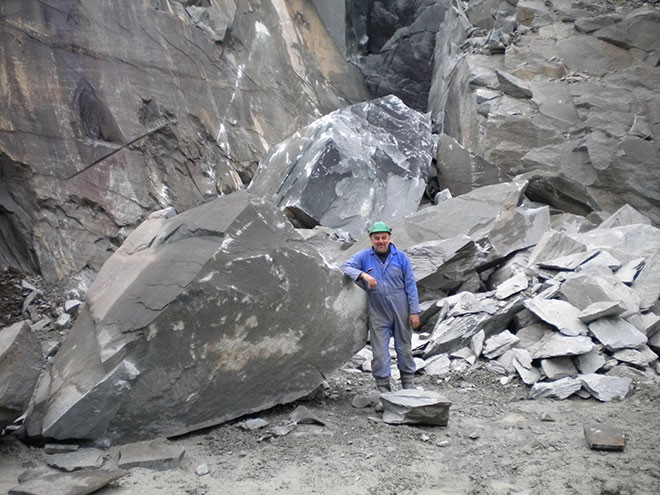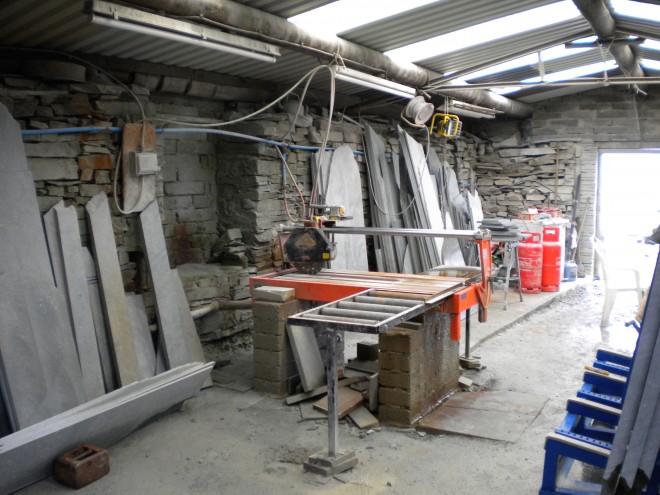Slate Mine History
The“Old Man of Coniston” is situated in the heart of the Lakes District, it is 2,634 feet (803 m) high, and lies to the west of the village of Coniston.
The slate mines are situated on the North East flank of the Old Man, and are known as "Old Man Quarries", though sometimes given the individual names of: Brandy Crag, SaddleStone and Moss Head.
The slate mines have been worked since at least the 13th century. All the workings are more or less underground, apart from Low Brandy Crag, which was opened out into an opencast quarry in the 1980's by Burlington Stone, and is still operating today. Most of the lower levels in Saddlestone are blocked, though the Moss Head Quarries are still open.

